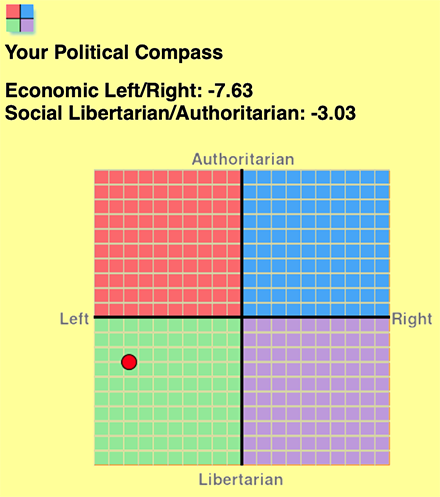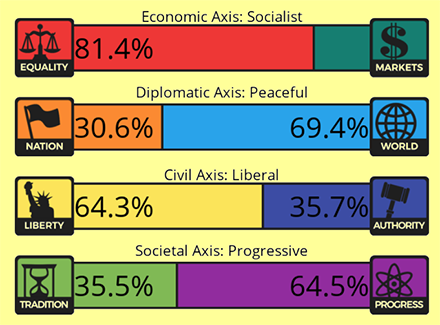Class meeting this week is on Zoom.
Class begins January 26 at 6:00 pm (we just do discussion boards in this session)
(in actual practice, we generally conclude the Zoom sessions before 8:00 so that you will have time to work on the Canvas discussion boards)
Class session lasts from January 26 at 6:00 p.m. to February 2 at 5:59 pm, but the discussion boards will not be graded until after February 9th
This page describes what you should do in this second session.
Objectives of this session
- Understand the law of supply and demand and the times when the rule of supply and demand does not seem to apply.
- Know who John Maynard Keynes was, and what he believed about business cycles, and some things he said.
- Finish reading Economix.
- Know about slumps and the Great Depression and how bubbles and the business cycle fits in with slumps and recessions and depressions.
- Know a bit about the New Deal and how FDR tried to address the Great Depression.
- Know what is meant by the “Revolt of the Rich” and what are we talking about if we mention “Reagan’s Legacy”.
- Know what we mean by “externalities”
- Know who Ludwig von Mises and Friedrich Hayek and Milton Friedman were, and what ideas they promoted.
- Understand what we mean by “market failures” and be able to mention and describe one of these market failures.
- Know what were some of the problems faced during the Era of Limits, and how did the War in Vietnam play a role in triggering these.
- Know what caused the Financial Collapse of 2008.
- Understand the basic ideas of the Moral Foundations Theory
- Be able to use the moral foundations theory as a tool to find rhetoric or persuasive arguments most likely to sway opinion in favor of good services/policies.
Time Budget for 11 hours
3h 30m Class meeting on Zoom and time spent on discussion boards.
2h 45m Read pages 8-129 in Economix: How Our Economy Works: In words and pictures by Michael Goodwin.
30m Finding a post and identifying the ideology of the post, and sharing the post with the class.
30m Indentifying an issue related to social justice and explaining how the field of economics (something from Economix or from the blog article you’ll find in this session) informs our understanding of the issue.
2h 15m Study moral foundations theory and take tests that measure your political and ideological preferences.
1h 30m Find and read an article on an economics blog, and then write a summary of it to share with the class.
What will happen in the class meeting at the start of this session?
During our a class meeting, I would expect to use time in the following ways:
- We will review the first half of Economix
- We will review Lakoff's theory of metaphors
- We will discuss any current events related to social welfare policies and services.
What must you read this week?
Read pages 130-291 in Economix: How Our Economy Works: In words and pictures by Michael Goodwin. In other words, finish the book.
You also ought to read Michael Goodwin’s additions to the book available online, but you may have already done that in the first week, and you can read these in later weeks if you do not have time this week:
Read any two of the following four sources to become familiar with moral foundations theory (allocate about one hour for learning about Moral Foudations Theory):
• Jesse Graham, Jonathan Haidt, Sena Koleva, Matt Motyl, Ravi Iyer, Sean P. Wojcik, and Peter H. Ditto have a chapter in Advances in Experimental Social Psychology (Volume 47, 2013, pages 55-130) (http://dx.doi.org/10.1016/B978-0-12-407236-7.00002-4) that you ought to look at. You can get access through the UIS library. It will be easy to search and find it in PDF format. Or, you can go to the URL where I have a copy stored on my personal server. This is a good source, but it’s rather long. You will understand enough if you give about half-an-hour to reading it until you grasp what moral foundations theory is. You don’t need to read everything.
• Watch Jonathan Haidt presenting the Moral Foundations theory as an 18 minute TED talk.
• Poke around the blog Jonathan Haidt has, and perhaps watch him with Bill Moyers; you can find links to the latest articles and videos. Remember that we are mainly looking for material that will help you understand the moral foundations theory; and (for this class) you do not need to pay attention to Haidt’s other ideas (although you might want to, just for fun).
• Visit MoralFoundations.org and read what you find about moral foundations there.
You will need to find and read at least one article on an economics blog to complete one of this week’s exercises.
Activities
I expect you to use about an hour (or a little more than an hour) to explore your own values and ideological preferences.
- To learn about your ideological preference, I want you to take some surveys about your ideology:
- To learn about your moral foundations preferences, I want you to take two surveys about your priorities in moral foundations:
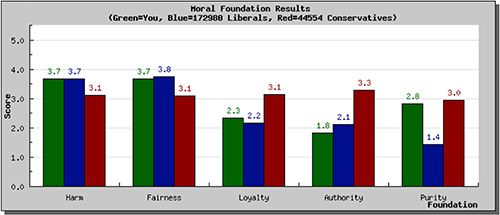
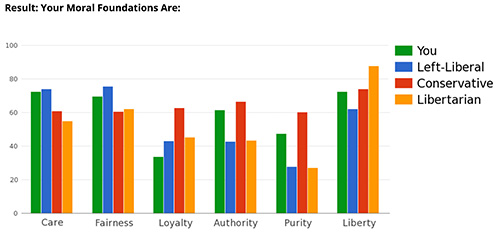
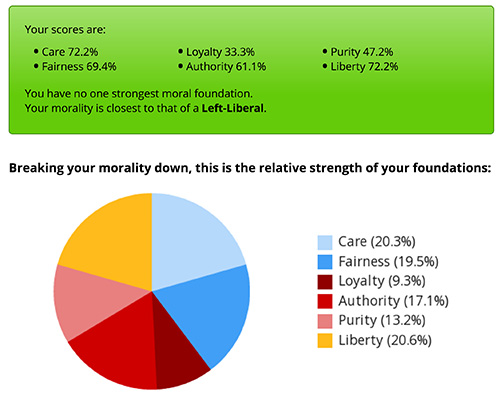
- Economics Blog assignment
You must find an economics blog or website, and find an article there of interest to you. Read it. Write a paragraph or two summary (or prepare one), and then bring it to class. We will have several students share these in our third class meeting.
For your article, try to identify:
1) the ideology of the person whose post or article you have read.
2) the economic ideas covered by Michael Goodwin in Economix that the author emphasizes.
3) the main argument or point of the post or article.
4) your own opinion or interest in the article.
5) any implications for social welfare or social policy.
A list of good economics blogs is available at https://www.intelligenteconomist.com/economics-blogs/ and also you can find sources at https://www.historylines.net/pages/economics.html.
- Social Justice and Economix.
Come to our third class prepared to present a question about social justice or social welfare policies and services, and then explain how something you read in Economix (or something you encountered in reading an economics article or blog post) gives us some information or ideas that may help us answer the question. For example, you may ask the question, “why can’t we just end poverty by giving all the poor persons money so that there are no more poor people?” (That’s a good question… go ahead and use it if you can’t think of one yourself).
- Identify ideologies using comments after articles.
Find a comment after an article somewhere, in which a person offers an opinion or point that well-illustrates some sort of economic or ideological belief. We as a class are going to collect actual samples of real comments from the field that illustrate how people understand economics and ideology. Bring it to class and share it. We’ll try to collect these and post them on our class blog. If you can’t figure out how to find posts and comments that offer opinions on economics and ideology, just go to https://www.debate.org/opinions/economics and pick something posted there. But, ideally, you’ll find some post in the comments somewhere after an article that will capture the essence of an economic or political ideology. My suggestion is to look for articles about social welfare programs, and you’ll almost always find someone posting opinions about how benefits for the poor are inefficient and counter-productive.
- You should post responses to some of the discussion prompts in Canvass, and also respond to some of your classmates when they post on Canvas discussion boards.
With the class discussion board, do not worry if you cannot find the time to answer every question I have posted as a prompt; just keep track of your time and answer what you can. The idea is that the combination of our official Zoom meeting and your time on the discussion boards ought to sum up to 3 hours and 30 minutes (minus some time for a break). So, if we meet as a class on Zoom for two hours, please answer what you can in 90 minutes, and if we use 90 minutes in our Zoom meeting, please use two hours on the discussion board. You will need time to read the prompts, answer some of the prompts, read the discussion that follows, and post responses and replies and questions to some of your classmates and the professor in the online discussion. Ideally, you will spend a bit more time answering and replying and commenting with your classmates in the discussion (making it an actual discussion) and not spend the majority of your time answering my prompts and then ignoring the posts made by your classmates. You are not expected to read all the posts in the discussion board. Just keep track of your time and put in the full amount of time, and read and respond to what you can within the time budget.
Working on your Assignments
As always, I invite you to engage in class discussion on the Canvas discussion board. The discussion questions for this week are these:
Discussion Question 2-1: Check in and share some personal anecdote from the past week. What has been going on in your life or in your thoughts?
Discussion Question 2-2: If you have heard of any news report or commentary in recent days that touches on social welfare policies or services, share what you found and explain what you understand or what opinion you have related to the article or editorial. Be sure to share a link to the source so others can read what you found (if it was something you saw online).
Discussion Question 2-3: Choose one of the sources about moral foundations theory recommended for the second week, and discuss what you learned from it and what you think about it here. Did the source give you something useful you might use as a social worker when you try to work in the realm of policy practice? Are there any insights you think might help you in general as a human being or as a social worker?
The recommended sources are these:
- Jesse Graham, Jonathan Haidt, Sena Koleva, Matt Motyl, Ravi Iyer, Sean P. Wojcik, and Peter H. Ditto have a chapter in Advances in Experimental Social Psychology (Volume 47, 2013, pages 55-130) (http://dx.doi.org/10.1016/B978-0-12-407236-7.00002-4 (Links to an external site.)) that you ought to look at. You can get access through the UIS library. It will be easy to search and find it in PDF format. Or, you can go to the URL where I have a copy stored on my personal server: http://www.historylines.net/UIS/UofI_box/UIS_Courses/classes/SWK355/papers/Moral_Foundations_Theory.pdf (Links to an external site.) This is a good source, but it’s rather long. You will understand enough if you give about half-an-hour to reading it until you grasp what moral foundations theory is. You don’t need to read everything.
- Watch Jonathan Haidt presenting the Moral Foundations theory as an 18 minute TED talk. https://www.ted.com/talks/jonathan_haidt_on_the_moral_mind?language=en (Links to an external site.)
- Poke around the blog Jonathan Haidt has, and perhaps watch him with Bill Moyers (link on the home page of his blog) or read some of his essays. On this blog you will see how he applies moral foundation theory. https://righteousmind.com/ (Links to an external site.)
- Visit MoralFoundations.org (Links to an external site.) and read what you find about moral foundations there.
Discussion Question 2-4: Share the results of a moral foundations test or assessment you took. What were the values that you had as most important? How do your scores compare to other groups? Feel encouraged to comment on the process of assessing your moral foundations, and what you think of this moral foundations theory.
Discussion Question 2-5: Share your results on a political orientation test. Do you agree with the results? What observations or questions do you have about the process of measuring your political orientation?
Some political orientation tests include the following:
- http://www.people-press.org/quiz/political-typology/ (Links to an external site.) (17 questions)
- https://8values.github.io (Links to an external site.) (70 questions)
- https://www.idrlabs.com/political-coordinates/test.php (Links to an external site.) (36 questions)
- https://www.politicalcompass.org/ (Links to an external site.) (look for the “Take the test” link at the bottom of the page, which will take you to https://www.politicalcompass.org/test (Links to an external site.)) (34 questions)
Discussion Question 2-6: What are some of the main insights, theories, or ideas you are taking from the Economix book? Looking ahead five or ten years, what point or points from this book do you think you will remember? How is your understanding of the world changed by learning the ideas and facts presented in the book?
Discussion Question 2-7: Briefly describe or identify any social welfare policy or service.
Briefly summarize how it might be supported using what Lakoff describes as the "disciplinarian strict father" metaphorical moral framework used by American conservatives.
Briefly summarize how it might be supported using what Lakoff describes as the "egalitarian nurturing collaborative parents" metaphorical moral framework used by American liberals.
Then, for each approach, how might the social welfare policy or service be attacked?
Generally speaking, whatever policy or service you have identified will be praised or criticized by conservatives based on how it might be seen to encourage (or discourage) self-discipline, independence, self-reliance, and hard work. And, broadly speaking, it will be praised or criticized by liberals based on how it might help or block people from getting what they need, facilitating their growth and development, enjoying protection, and receiving equal support toward egalitarian outcomes.
Although that is pretty much it for your assigned activities, you may want to do the following:
- Think about what you want to write about in your first reaction essay. Study the class blog to see what other students wrote.
- Consider what you want to do with your three policy papers. You probably will need 8-12 hours to write each of them, so start on those early if you like.
Interesting Stuff To Explore
Notes on Lakoff
1) Evey word has
emotional associations with it, that will trigger responses in the audience. By choosing the words you use to discuss policy, you can manipulate the emotions of your audience to be favorable or repelled by something. If you know the ideology of your audience, you ought to use the words that will have the desired emotional response.
2) You usually can't win arguments with facts and rational arguments. Rather, you will persuade most audiences through narratives and stories that have moral implications and grab the emotional attention of your audience. Academics and politicians ought to be immune to this, as those classes of persons ought to be interested in dispassionate and scientific analysis of the effectiveness and efficiency of policies and services, but unfortunately, although politicians and academics probably care much more about facts and evidence, they are also susceptible to the cognitive bias that impairs their ability to use rational analysis in consideration of policies and services.
3) In the United States political discourse, Republicans like the the metaphorical ideal of an authoritarian father-figure who uses strict discipline to encourage self-discipline, independence, and autonomy in the children of the family. Liberals like the metaphorical ideal of a nurturing and collaborative family in which the mother and father work to meet the needs of the children and nurture each person so that everyone gets what they need. All Americans can respond positively to the metaphors and values of the liberal and conservative viewpoint, but not at the same time. Dispositional preferences and priorities make people more likely to use one or the other lens to view the world or any problem.
Review the basic political ideologies of the United States:
Libertarian ideologies have little faith in government or institutions. They tend to remove regulation and demolish the welfare state. Most have faith in capitalism and private enterprise to solve problems.
Anarchists are similar to Libertarians in their skepticism about all forms of government, but they likewise distrust and dislike capitalism and corporations.
Conservatives are currently "mainstream" Americans. They would like limited government, lower taxes, and less regulation. They generally support a modest welfare state safety net. They are distrustful of new government programs and many government efforts to guide the economy. Traditionally, conservatives have been concerned about the military strength of the United States, and have been less likely to oppose American use of military force. Conservatives have more faith in the free market and private enterprise. George Lakoff says that the "strict authoritarian father" that Conservatives metaphorically prefer as the "decider" who determines what ought to happen is the so-called "Invisible Hand" of capitalism described by Adam Smith in his Wealth of Nations (1776). Conservatives also tend to have "traditional values" about personal behavior, and have been more willing to support restrictions on personal behavior. Studies by psychologists have shown that American conservatives are more easily triggered to have strong responses of disgust, and they tend to be more fearful and suspicious, and they are more punitive. Some studies from years ago suggested that American conservatives tended to give higher proportions of their income to charities, and they tended to volunteer more hours of service, so that became the conventional wisdom, but more thorough recent studies have contradicted this finding. It is religiousity, rather than political ideology, that encourages more donating and volunteering.
Liberals are another "mainstream" sort of American. Liberals are generally more interested in fixing problems through finding technical fixes or adjustments. They are more willing to have larger government involvement in markets and business regulation. They are more well-disposed to redistributive policies that address inequalities in society. In particular, liberals are more concerned that policies are "taking care of" everyone, and that people are given "fair chances." Political philosophers claim that liberals are always suspicious that perhaps they have a responsibility for the conditions of others, and perhaps they don't deserve all the good things they have, and so they therefore are more willing to sacrifice their own time or wealth to contribute to the well-being of others. Liberals are more likely to embrace change or attempts to improve society or government. Innovations in policy may attract their support. In recent years, American liberals have become very concerned with the treatment of historically oppressed or marginalized groups.
Radicals are (like Libertarians and Anarchists) more fringe in the American political discourse. The main characteristic of radicals is that they see the world through the lens of critical theory and class consciousness. They are interested in how particular groups who have advantage perpetuate their position by structuring discourse and institutions to give advantages to themselves and others, and harm or disadvantage others. The radical position to any problem is that there must be someone who is gaining an advantage by allowing the problem to arise or continue. Radicals are critical about systems that control the behavior of people who are being exploited, and they advocate policies that redistribute power toward those who have little power.
There are certain esoteric groups of radicals who do not care quite as much about class conflict, and propose that the powerful exploiters as well as the less-powerful exploited groups are all enmeshed in delusions about human well-being and justice. Some of these radicals are "Greens" who reject the pursuit of economic growth and material wealth. Others are religious or new age critics who think society's problems are rooted in spiritual problems and false consciousness that fetishizes things/wealth/power and ignores the value of people/virtue/love.
Moderates are persons who switch between the paradigms and metaphors used by conservatives and liberals (and perhaps radicals and libertarians and greens as well). Sometimes, or in some cases, they prioritize the values and analysis of liberals or radicals, and in other times or circumstances they prioritize the views of conservatives. All of us are “moderate” to the extent we can “see both sides” and must decide between two or more views where we appreciate (or dislike) the options. But, most of us know that we generally tend to agree with the value assumptions and contextual understandings prefered by liberals/radicals or conservatives/libertarians, and so we probably usually just generalize or approach issues with the bias that makes us more “left” or “right”. This is not necesarily a bad thing. We don’t have the time or energy to carefully consider all questions without generalizing, and having a worldview preference that we recognize as an ideological bias can help us quickly reach conclusions consistent with our values; but we must be careful and sometimes consider whether our bias is misleading us or blinding us to legitimate criticisms or potentially better alternatives.
After we have discussed ideologies, there is an in-class exercise to practice the crafting of issue-framing in which students will use Lakoff's theory to create slogans or arguments in support (and opposed) to various policies. When we are online, this can be a discussion question in which you will be asked to take a single policy (any policy or service, you can make one up or use a real world example), and then frame a position for or against that policy, opposing it with a Lakoff conservative and Lakoff liberal set of metaphors and values, and then supporting it with Lakoff conservative and Lakoff liberal metaphors. The object is to demonstrate that you understand the metaphors used by conservatives and liberals (according to Lakoff) and can apply your understanding in creating narrative descriptions of issues that would appeal to liberals or conservatives, depending upon whether you want those audiences to support or oppose the service/policy idea.
Questions to consider in the second class session:
What is going on in current events related to social welfare policies? What can I learn from the news about social welfare issues?
How will the professor grade my work in this course? What do I have to do in the assignments?
What are some of the things I should notice about political rhetoric? What is persuasive and why is it persuasive?
Why are people conservative or liberal?
Ideologies & Moral Foundations. What are the moral foundations? How are personalities related to ideologies and moral reasoning?
Economics: Is the purpose of economics to help us understand how to increase leisure and happiness? How can we distribute scarce goods and services fairly?
What is a mixed economy? When we talk about "public control and private control" of the economy, what do we mean?
What are some of the benefits of welfare states; and what are the problems?
We have mixed welfare sectors: public, non-profit, and for-profit corporations are all involved in providing the social safety net and offering social services.
What is Social Justice? Why is the social work profession advocating for social justice?
Reviewing content from the first week:
In this section of the class session guide I enjoy sharing interesting web resources of additional and supplemental materials I think you might enjoy exploring on your own time. You are not expected or assigned to look at this material, but I offer it to support your curiosity.
Consider whether you know about these sorts of things before you come to class:
-
Lakoff says that thought is based on “frames” and “conceptual metaphors” but what does he mean by those?
Do you understand what Lakoff means when he says that “all politics are moral”?
What is a mutual inhibition (in muscles or in neural circuitry / worldviews)?
How do you “activate a worldview”? The idea Lakoff presents is that most people have some conservative and some liberal worldviews, but you can activate those worldviews with particular language (using frame words), and conservatives have
What is the generalization or underlying set of assumptions that connects: 1) abortion; 2) flat tax; 3) gun ownership; 4) environmental regulations. What is it that (in America) allows me to guess that you are in favor of easy gun ownership, lower standards of environmental regulations, and a flat tax if I am told that you oppose easy abortion access? Why is it in our culture that causes persons who favor women’s ability to get an abortion without legal interference also far more likely to prefer that industries will have many legal restructions on how they pollute or use natural resources, far more likely to favor legal interference with a citizen’s ability to get any sort of gun, and far more likely to favor a tax system where wealthy people pay a higher rate than middle class people, with working class and poor people paying very low tax rates?
-
What were the contributions of Adam Smith, Thomas Maltheus, and David Ricardo to our understanding of how economies function?
-
How did corporations arise as powerful players in the modern economy, and how does the presence of massive corporations that transcend national boundaries change the rules of economics as they exist in teh economies of the 18th century that Adam Smith knew?
If you prefer pedagogic videos over reading Economix you might like some of these videos on YouTube:

